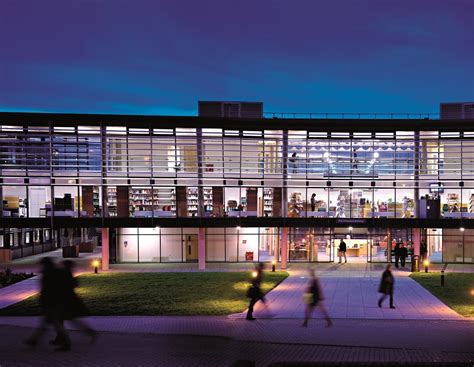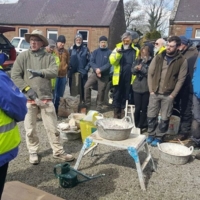This website uses cookies so that we can provide you with the best user experience possible. Cookie information is stored in your browser and performs functions such as recognising you when you return to our website and helping our team to understand which sections of the website you find most interesting and useful.
Member Spotlight: Neil Hewitt Building Surveyor

Neil Hewitt Building Surveyor, Chartered Building Engineer C Build E MCABE AssocRICS, MCIEH, DipHi, DipDEA, DipGDA, BSc (Hons), RPSA Member, talks about his profession and why he has joined the BLF.
Tell us more about your business.
I work as a surveyor in Suffolk, mostly conducting surveys for clients buying older timber frame and clay lump properties. I came into this role quite late in life, after working in social housing and private housing enforcement. I have undertaken many courses in traditional building and working with lime, with Anglia Lime, Orchard Barn and Essex Place Services. I prefer to take a practical hands-on approach, and often find the best way to learn is to get stuck in.
What made you decide to join the forum?
I very much believe in traditional builds; we need to understand the structures built in previous decades and centuries. I say decades because many traditional builds date to the earlier part of the 20th century. Suffolk has a fine collection of timber frame properties, with many listed houses, and some not listed, though perhaps need to be listed. We can think of places such as Lavenham, though there are many great examples of timber frame outside of Lavenham, and oddly Lavenham is not typical of the Suffolk method of building timber frame. Wealth tended to dictate the style of build.
Do you think there is more to be done so that professional bodies understand the more complex buildings like those which are listed?
All trades and professions have their role to play in maintaining traditional buildings, including those professionals such as building engineers, structural engineers, and various types of surveyor. Some professions will have dedicated sub groups for traditional builds.
There is an emerging trend to use more sustainable materials for construction, with professional standards setting sustainability at the heart of an organisation. This is assisted by, for instance, several organisations such as The Alliance for Sustainable Building Products. However, there can be varying definitions of sustainability, and sometimes there is too much of a focus on carbon savings emissions, often achieved by unsuitable insulation measures and that ignore genuine sustainability.
I would not say that listed buildings are always more complex. Sometimes they are less complex, but modern building methods demand a level of complexity. The simple but most sustainable buildings can be very non-complex, such as an earthen wall house.
There are many property bodies and especially their members who are entrenched in behaviours that ultimately cause damage to properties, even if not readily apparent. However, some are now encompassing sustainability as a part of their requirements for their members, even within their code of conduct. Though in terms of building engineering, this can be simply to meet the various approved codes of practice under The Building Regulations.
Do you find your clients want more than the RICS offer?
Most of my clients do seek a survey that goes beyond that offered by the RICS level three survey, which I do offer, but considerably added to. For instance, simply talking to a client for as long as need be, and sometimes meeting clients on site to discuss defects at a house. Indeed often I do not use a RICS survey format, usually for an existing owner, and not a purchase survey.
Recently I revisited a house with a client, and the owner who arranged for his builder to use an angle grinder to remove a section of concrete render to inspect the timber frame. The use of an angle grinder does say a lot. The concrete render that had probably been added around fifty to sixty years ago had trapped water, and the sole plate, the jowl post and the vertical studs had rotted. The structural support was provided by the thick concrete render. The owner of the house wanted to use his own builder for the repairs. I advised my client the buyer to choose his own contractor and to remain in control.
With climate change, are you finding more problems with damp – if so, what are the causes?
Even here in the relatively dry East of England, there have been erratic weather conditions, with an exceptionally dry summer last year that baked building materials dry, to some very sustained wet periods recently that do test building materials. Modern materials such as Portland cement perform very poorly in conjunction with traditional built houses and I have seen many examples where water is trapped into concrete rendered brick walls, or a timber frame. Concrete floors also direct water to the brick or timber walls.
Refurbishment of a house really does need to take a whole house approach, and I have seen such an example to a house in Aldeburgh where the concrete render and the concrete floor have all been removed to be replaced with lime insulation render and Limecrete floors. A genuine whole house approach.
Another listed house was built around 1800, with solid brick walls, and an external concrete render, and the original house would have not had any render. There was water penetration internally, and the owner had conducted inappropriate damp proofing measures, that only exacerbated the water penetration.
Should more be done about inappropriate repairs to preserve older buildings – what would you like to see happen?
There does need to be a lot more awareness about repairs to older buildings; this in some way is improving, thanks to the power of the internet, and the fact that homeowners can easily be directed to SPAB, IHBC etc. Some of my clients when I first speak to them are already aware about lime and breathability. I am in a sense interviewing them, almost to assess if they are a fit and proper person to take on part of our heritage. Most ‘pass’, but the odd one does not, and I then gently warn them of what they are undertaking, and sometimes they will drop the idea of buying a period property. That house can then await a better owner.
We must not forget that when we talk of traditional built homes, it is not just the much older listed properties, but the many millions of typical pre-1919 houses. Their owners often do not consider establishing that a contractor does have the requisite knowledge and skill to repair and renovate such a home, and often inappropriate repairs are conducted. A typical example being chemical damp proof course injection when there are defined causes of water penetration, and the all too common cement pointing, that leads to significant damage to the older soft bricks.
There are a lot of commercial pressures to renovate properties, especially with current energy initiatives. Some measures are not suited to older homes. For example, there are many materials and interventions sold as ‘green’ but which are very damaging to older homes.
I think that those who work in the traditional building crafts tend to be more approachable and friendly. They show a caring nature to homes and their work, that endears homeowners. Perhaps the biggest issue is that of the inevitable concrete render externally, and modern plasters internally, as well as concrete floors. Sadly I suspect that many properties, if they are not appropriately re- paired, will simply not be around in decades to come.
What do you think are the benefits of joining the BLF?
I joined the Building Limes Forum to improve my working knowledge of lime, to better understand use of lime, as in where it is best used, and sometimes best not to be used. I passionately believe in genuine sustainability, and I am very aware of the adverse publicity that exists in the building industry. To borrow a phrase from Greta Thunberg, there is a lot of ‘green- washing’ in the property industry, and this very regrettably can show itself with dramatic and deadly incidents, and that often it is only those incidents that make the government react.
I still have to be a bit more involved with the BLF. I tend to attend many sessions online, in part due to time and distance, and to save carbon. I do attend some traditional building sessions, such as recent courses on thatching with Chris Dodson and Charles Chalcraft, and on lime with Anglia Lime in Suffolk and Orchard Barn. I consider the BLF to be very actively involved with its members
Become a member
Members of the Building Limes Forum form a community of lime enthusiasts and practitioners, most of whom are producers, suppliers, specifiers or users of lime.
Useful documents
Contact Building Limes Forum
Building Limes Forum
Riddle’s Court
322 Lawnmarket
Edinburgh, EH1 2PG, UK


